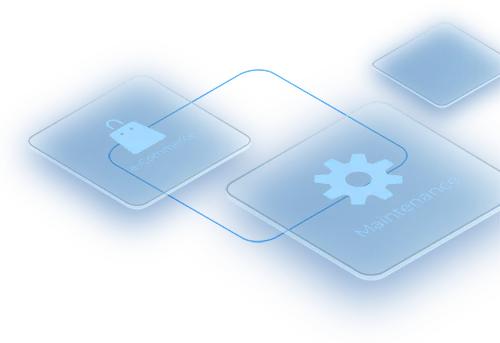In essence, quality control plays a role for restaurants akin to cheese for pizza – it elevates the end product.
Quality control measures guarantee the delivery of superior food to customers, ultimately leading to a substantial surge in demand for your restaurant.
Restaurant Quality Control (QC) encompasses a comprehensive approach to ensure excellence across all aspects of the dining experience, extending far beyond just the food itself.
It involves meticulously managing and optimizing numerous factors that collectively create a safe, exceptional, and fulfilling atmosphere for customers.
By attentively addressing each component, the restaurant can elevate customer satisfaction to the ultimate objective cherished by every restaurant owner.
Implementing robust restaurant quality control procedures is crucial for ensuring consistent excellence in every aspect of the dining experience.
A list of six Restaurant Quality Control methods that every restaurant owner must adhere to has been compiled by us as a service to you.
Content Index
- Setting quality standards
- Training and Educating Staff
- Practicing FIFO method
- Timely and efficient service
- Using Quality Control Tools and Technology
- Feedback and Continuous Improvement
- Conclusion

Setting Quality Standards
Developing clear and comprehensive procedures for restaurant quality control is essential to establish and maintain rigorous food quality standards and minimize guest dissatisfaction.
To accomplish this, a Product Requirement Document is employed, delineating precise criteria for each menu item, encompassing physical, chemical, and microbiological aspects.
Physical attributes encompass appearance, texture, taste, and aroma, with clear specifications on shape, portion size, and weight.
Meanwhile, chemical characteristics focus on nutritional value, while microbiological standards outline proper handling and cooking procedures.
Sharing this document across all outlets is essential to ensure consistent adherence to protocols by all employees.
By upholding these set quality standards, restaurants can uphold uniformity, safety, and guest contentment, elevating the overall dining experience.
Training and Educating Staff
The initial step in implementing effective processes is to establish quality standards. After creating quality standards, instruct your staff on how to use the procedures.
To ensure successful training, it’s essential to document these standards in easily accessible formats, such as both paper and digital versions.
A paper format proves valuable for employees without immediate computer access. Incorporating quality standards into the onboarding process and providing continuous training throughout an employee’s tenure is essential.
Listening to employee feedback is of utmost importance since they are on the front lines and can identify areas for improvement or potential issues.
The use of visual aids in training materials is crucial, as it helps clarify expectations at each stage, making the information more understandable and accessible to the team.
Taking this comprehensive approach will foster a culture of quality control and significantly boost the success of the processes in place.
Incorporating a well-designed Restaurant POS system as part of the training process will streamline operations, ensure accurate transaction processing, and facilitate data management, contributing to the overall success of the implemented quality control processes.
Practicing FIFO Method
Implementing the FIFO approach is crucial in establishing effective procedures for restaurant quality control, ensuring the usage of the oldest inventory items first to maintain freshness and minimize waste.
This process ensures that ingredients and supplies are used in the order they were received, reducing the risk of spoilage or expiration.
By consistently adhering to FIFO, restaurants can uphold the quality of their dishes, avoid food spoilage and financial losses, and provide customers with fresh and satisfactory dining experiences.
By tracking inventory and sales data in real time, a POS system assists inventory management and helps in applying the FIFO approach for crucial restaurant quality control.
By automatically using the oldest things first, it helps to preserve product freshness, cut down on waste, and sustain high standards for food preparation.
Timely and Efficient Service
Time and efficient service are vital components of essential restaurant quality control procedures for restaurant owners.
By optimizing service times and ensuring efficiency in the kitchen and front-of-house operations, owners can enhance customer satisfaction, minimize wait times, and improve overall dining experiences.
Effective time management involves streamlining processes, training staff to work cohesively, and utilizing technology like POS systems to expedite order processing and delivery.
Consistent focus on time and efficiency will not only boost customer retention and loyalty but also lead to increased productivity and profitability for the restaurant.
Ensuring impeccable food quality control procedures for restaurants is paramount to delivering exceptional dining experiences and gaining customer loyalty.
Using Quality Control Tools and Technology
To maintain efficient quality control, restaurant operators must use technology and quality control instruments.
These instruments, including checklists, standardized practices, and monitoring systems for food safety, aid in preserving consistency in food preparation, service, and cleanliness.
By streamlining order processing, inventory management, and customer feedback gathering, technology implementation, such as POS systems, improves overall efficiency and accuracy.
Restaurant operators may increase customer happiness, uphold high standards, and quickly identify and handle possible concerns by utilizing these tools and technologies, which will ultimately result in a profitable and competitive dining facility.
Feedback and Continuous Improvement
Feedback and continual improvement are key in restaurant quality control. Owners can better understand client preferences and address any problems by collecting feedback from customers through surveys, reviews, and comment cards.
Observing operational data, such as sales numbers and food waste reports, reveals patterns and trends, allowing for more focused process and service improvements.
Restaurant owners may better respond to patron needs, improve menu items, and elevate dining experiences by cultivating a culture of continuous improvement.
This increases customer happiness and sustains success in the cutthroat food market.
Closing Thoughts
Implementing effective quality control measures is essential for restaurants to thrive and avoid being blacklisted, which could lead to their closure.
Given that diners primarily seek exceptional food and a pleasant dining environment, it becomes imperative to uphold rigorous standards to ensure consistent, top-notch offerings at the restaurant.
By adhering to these established procedures, establishments can not only meet but surpass customer expectations, fostering loyalty and long-term patronage.
Thus, prioritizing Restaurant quality control procedures guarantees a successful and sustainable culinary venture.
Want to learn more about Restaurant POS software? Check out our related blog topics!








